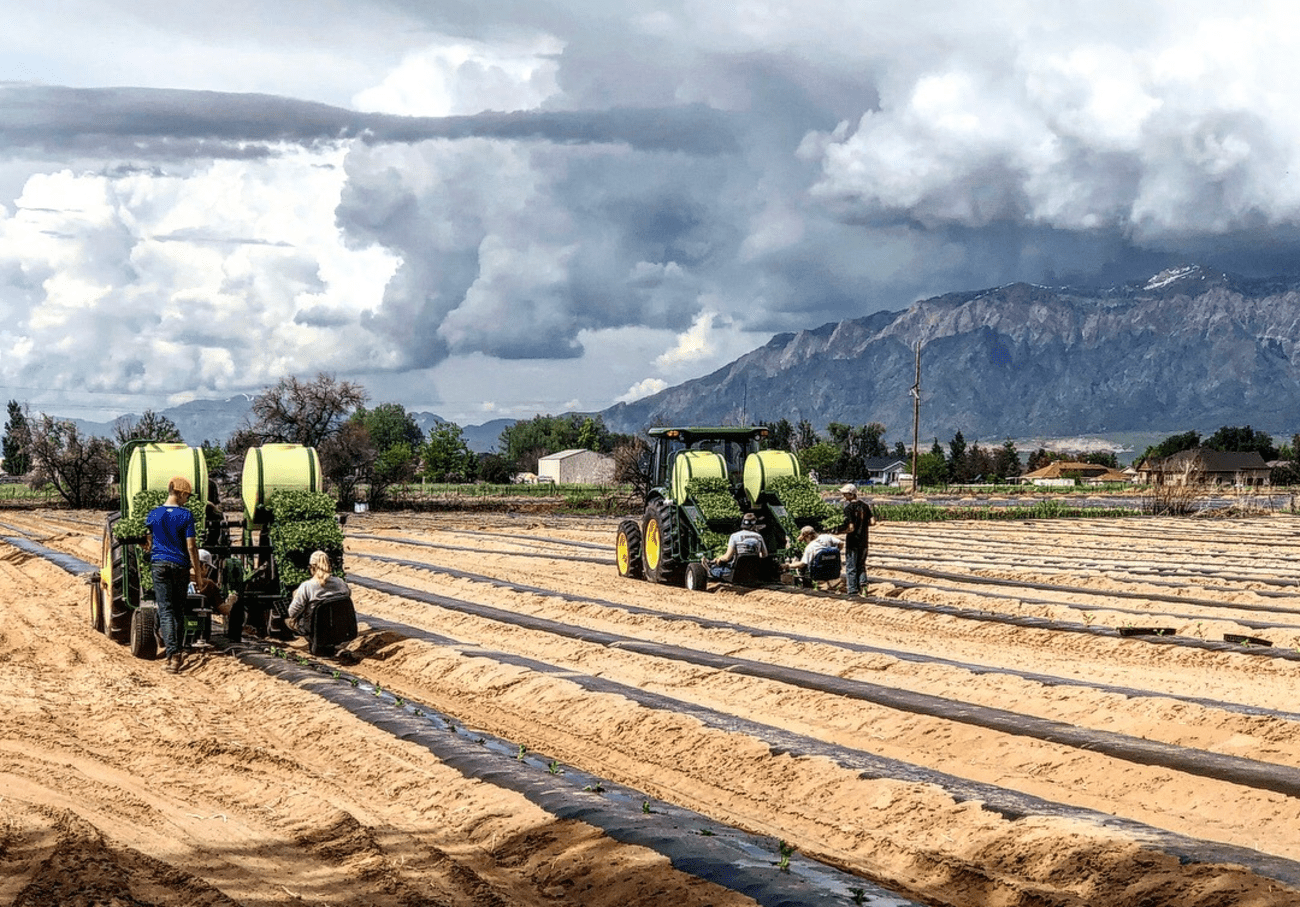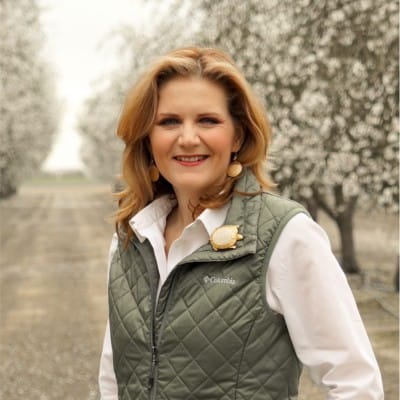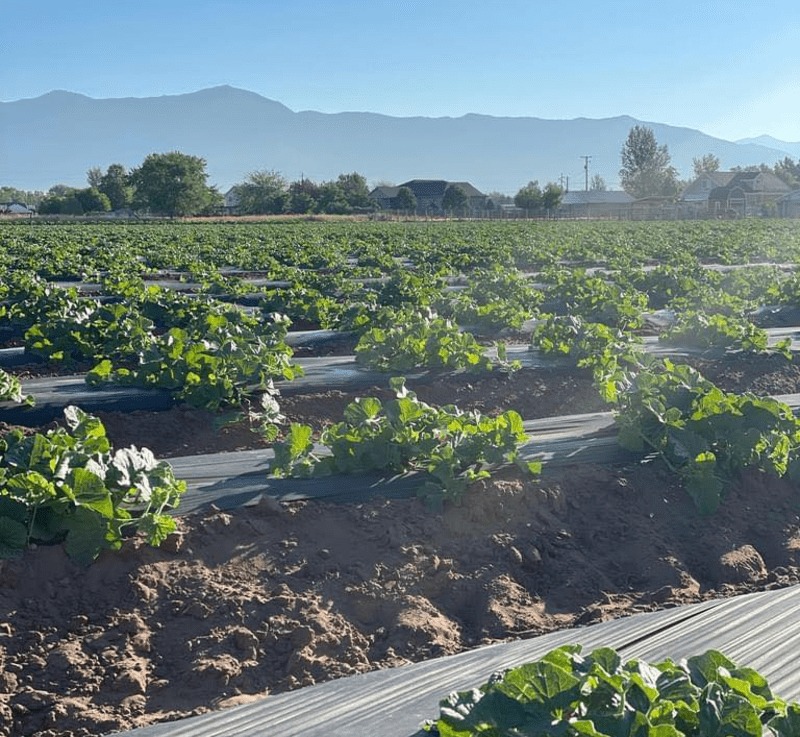

In Utah, farming and ranching soak up 61.5% of the available water. Much of that water comes from the Colorado River basin, which some predict will fall far short of meeting growing demand for water within the next few years.
Regulators are pushing for dramatically lower water usage, a measure putting the region’s farms at risk. To provide relief to farmers, Netafim, an Agritech leader based in Tel Aviv that has pioneered the application of precision irrigation, including drip irrigation, has launched a local resource hub to connect growers to the financing and information they need to thrive despite possible water restrictions.
Drip irrigation, including subsurface drip, has seen increased usage throughout Utah over the past few years, and is one solution that several farmers and homeowners in Utah are switching to for efficient watering of plants and crops.
Matt Peterson, a fifth-generation Utah farmer with 170 acres in West Ogden, Ogden Bay Produce, told TechBuzz he is seeing “a 70% water usage reduction, depending on the crop, with yields increasing thanks to directly watering at the roots of the plants.”
He attributes the sharp improvement of water usage to Netafim’s drip irrigation, which has also allowed him to conserve water, while at the same time, “spoon-feed plants fertilizer weekly, saving the farm 15% to 20% in fertilizer costs. It is a huge improvement,” says Peterson.
Netafim is an Israeli agri-tech company founded at Kibbutz Hatzerim, a collective and intentional farming community that was founded in 1946 in Israel's southern Negev Desert. Through necessity, Netafim invented the concept of drip irrigation over five decades ago. Its technology has been refined and applied widely throughout the world. As the largest "precision irrigation" company in the world, with manufacturing facilities in Europe, Asia, Latin America, Netafim is supplying farmers, such as the Peterson's in Ogden, with technology that can apply water "at the right place and the right time," said Aubrey Bettencourt, Netafim's Global Director of Government Relations and External Affairs.

"The idea is to match the plant's chemistry and biology with the irrigation technology to maximize its efficiency," explained Bettencourt.
Each type of plant has different irrigation needs. For example, almonds have a shallow but wide root zone. Bettencourt said, "in that case, a micro sprinkler precisely irrigating the surface area of the root zone makes sense. We have other technologies, such as drippers, that work well with vines. Our emphasis here in Utah, where we are seeing a lot of potential and a lot of interest from the state, is subsurface drip, that works well with specialty crops and high value vegetables, such as those grown at Peterson's farm, Ogden Bay Produce.

Peterson explains that subsurface drip irrigation is an effective system, as it saves significant water and benefits the plants. However, it does have significant upfront costs. “Due to pressurization, I have had to invest probably close to $100,000 in pumping equipment. The next thing needed is filtration because of the open canal system that we use. I’ve invested another $100,000 in filtration equipment along the way.”
“However, once the system is up and running, the year-to-year investment is much lower. We replace the tape every year; it is made of plastic resin and costs only about $100 a year per acre. There is a lot of manual labor involved with pulling the beds up, pulling the drip up, and filling everything to start over next spring, but it's to be expected,” said Peterson.
Realizing that the barrier to entry on drip irrigation is cost, Netafim has created a comprehensive resource hub to assist farmers with water restrictions and the upfront costs of drip system installations. "Netafim provides farmers with the ability to capture their own information about water usage: how they use it, when they use it, how it's being managed, so that they have the ability to utilize that data for their own purposes," said Bettencourt. Netafim has signed an MOU with the state of Utah to implement precision irrigation technology in Utah given the similarities in climate with that of Israel.
On the residential side of water conservation, Xeriscaping is taking off in Utah. Coined by the Denver Water Department in 1981, Xeriscaping aims to create beautiful gardens using an eco-friendly and water-conscious method.
Utah locals Rodrigo and Roberto Vega, a pioneering brother duo, are at the forefront of the Xeriscaping industry with their Salt Lake City-based company, Utah Wildflower Co.

The Vega brothers explained that “in the past, most landscaping was done for looks with little consideration for the environment or water usage. Now, Xeriscaping has allowed us to combine functionality with something that looks pleasant while not requiring a lot of water. Using native plants sourced from local nurseries, we can create something that makes sense for the homeowner, the state, and the environment.

Specifically, “using drip irrigation in a standard 1,000-square-foot garden can reduce water usage by 30% to 40% per month, roughly equating to around $200 saved annually. It costs between $500 to $1,500 to install if the previous, traditional sprinkler system has PVC pipes, so it pays for itself in a few years. The only maintenance is for the filters, which cost a couple of dollars,” added Rodrigo Vegas. “We are not looking for a monopoly; we want to inspire. The more we see it, the more we like it.”
The brothers are not alone in their efforts.
According to Craig W. Buttars, Commissioner for the Utah Department of Agriculture and Food, the department’s Agricultural Water Optimization Program has seen steady growth year over year.

“The state legislature has appropriated about $375 million for water optimization practices, direct irrigation, and surge flood irrigation. Producers can get up to a 75% grant. I was pleasantly surprised to see the number of drip irrigation project applications we had come in because it is still a new technology,” said the Commissioner.
He added, “Initially, the program focused on reduction in diversion for agriculture water. As we've progressed with the program, we're focusing more on depletion—water that is used and not returned to the system.”
Although the program provides crucial funding for farmers and ranchers, it is still relatively new, having started only in 2019. There is a lag between implementation and measurement. Buttars expounded on this point, “The biggest thing that needs to be put into place to help us manage water is measuring depletion. Utah State University is researching that issue, but currently we don't have a good way to actually measure depletion. It's a big challenge,” said Commissioner Buttars.
“We're working to compile data for every irrigation system. We'll have more data available at the end of this irrigation season and certainly by the end of the year,” concluded Commissioner Buttars.
For more information about Utah's water optimization programs for agriculture, commercial and residential applications, click here.

